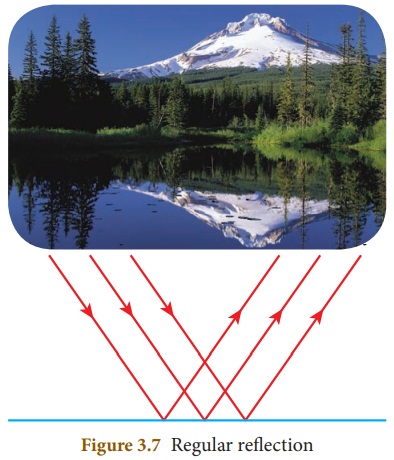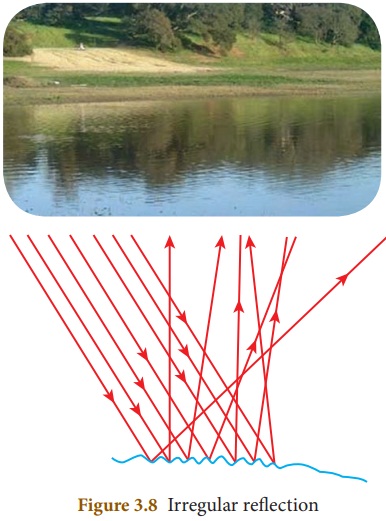Light | Chapter 3 | 8th Science - Types of Reflection | 8th Science : Chapter 3 : Light
Chapter: 8th Science : Chapter 3 : Light
Types of Reflection
Types of Reflection
We have learnt that not all bodies
can reflect light rays. The amount of reflection of light depends on the nature
of the reflecting surface of the body. Based on the nature of the surface,
reflection can be classified into two types namely, regular reflection and
irregular reflection.
1. Regular reflection
When a beam of light (collection of
parallel rays) falls on a smooth surface, it gets reflected. After reflection,
the reflected rays will be parallel to each other. Here, the angle of incidence
and the angle of reflection of each ray will be equal. Hence, the law of
reflection is obeyed in this case and thus a clear image is formed. This
reflection is called ‘regular reflection’ or ‘specular reflection’. Example:
Reflection of light by a plane mirror and reflection of light from the surface
of still water.

2. Irregular reflection
In
the case of a body having a rough or irregular surface, each region of the
surface is inclined at different angles. When light falls on such a surface,
the light rays are reflected at different angles. In this case, the angle of
incidence and the angle of reflection of each ray are not equal. Hence, the law of reflection is not
obeyed in this case and thus the image is not clear. Such a reflection is
called ‘irregular reflection’ or ‘diffused reflection’. Example: Reflection of
light from a wall.

Related Topics